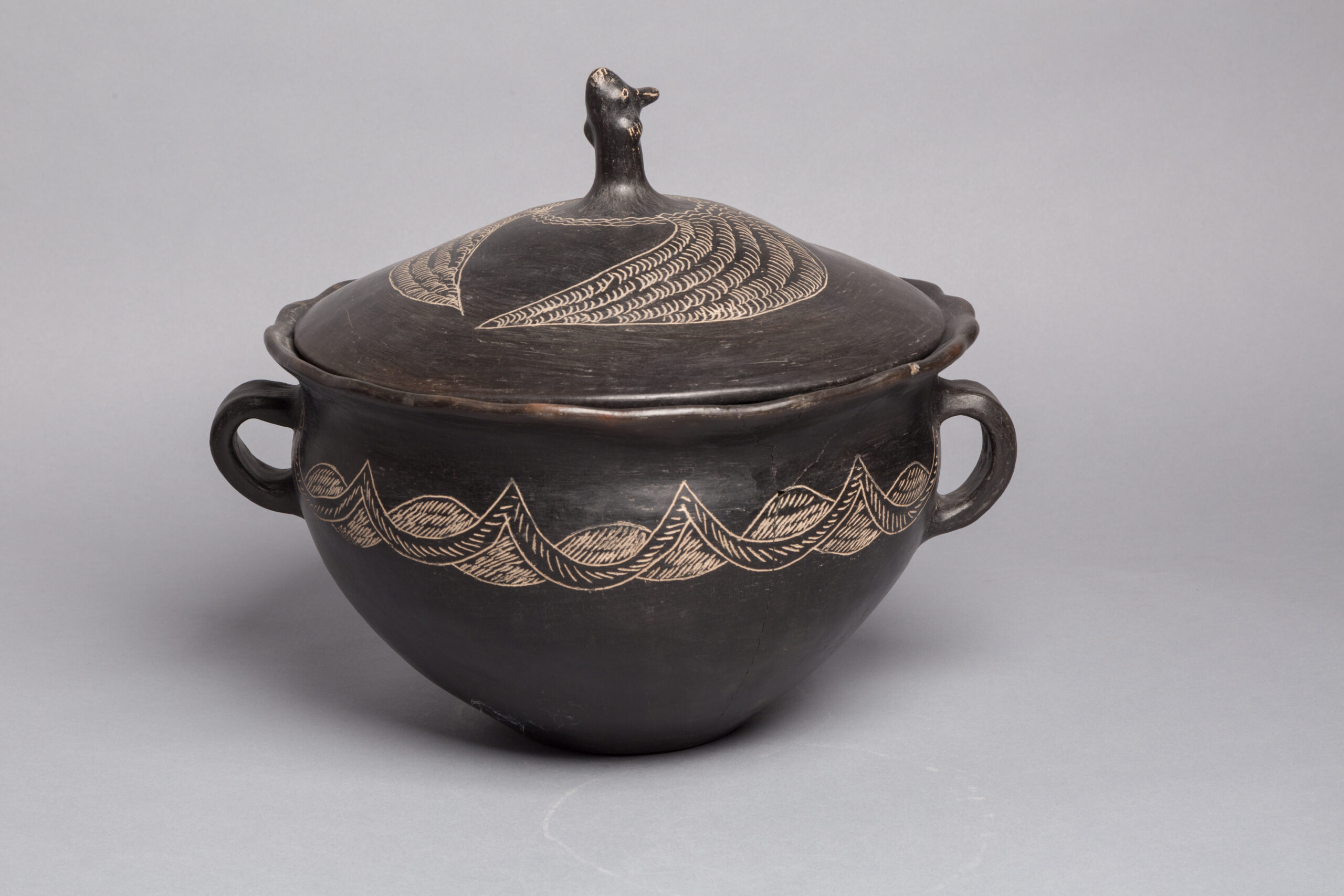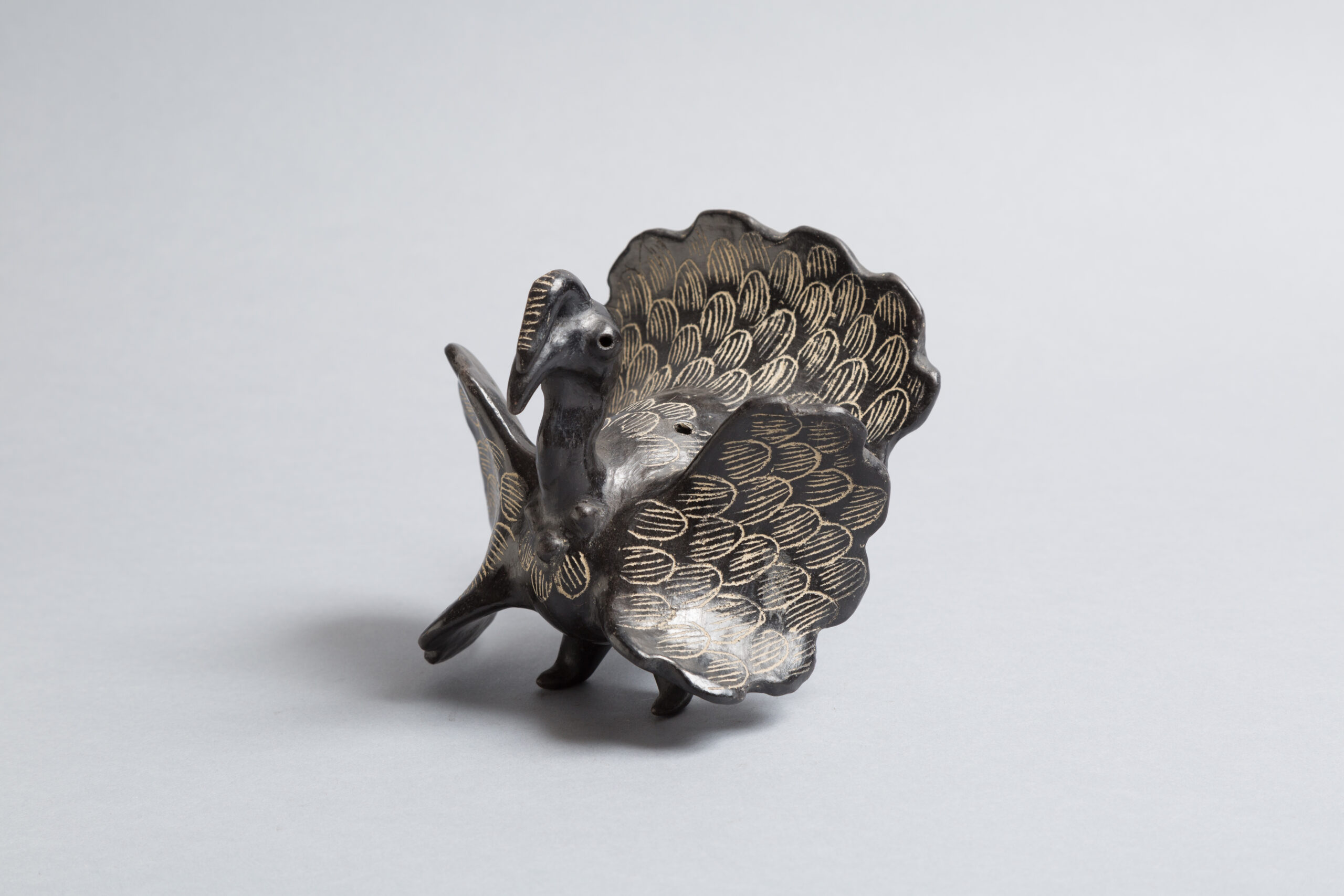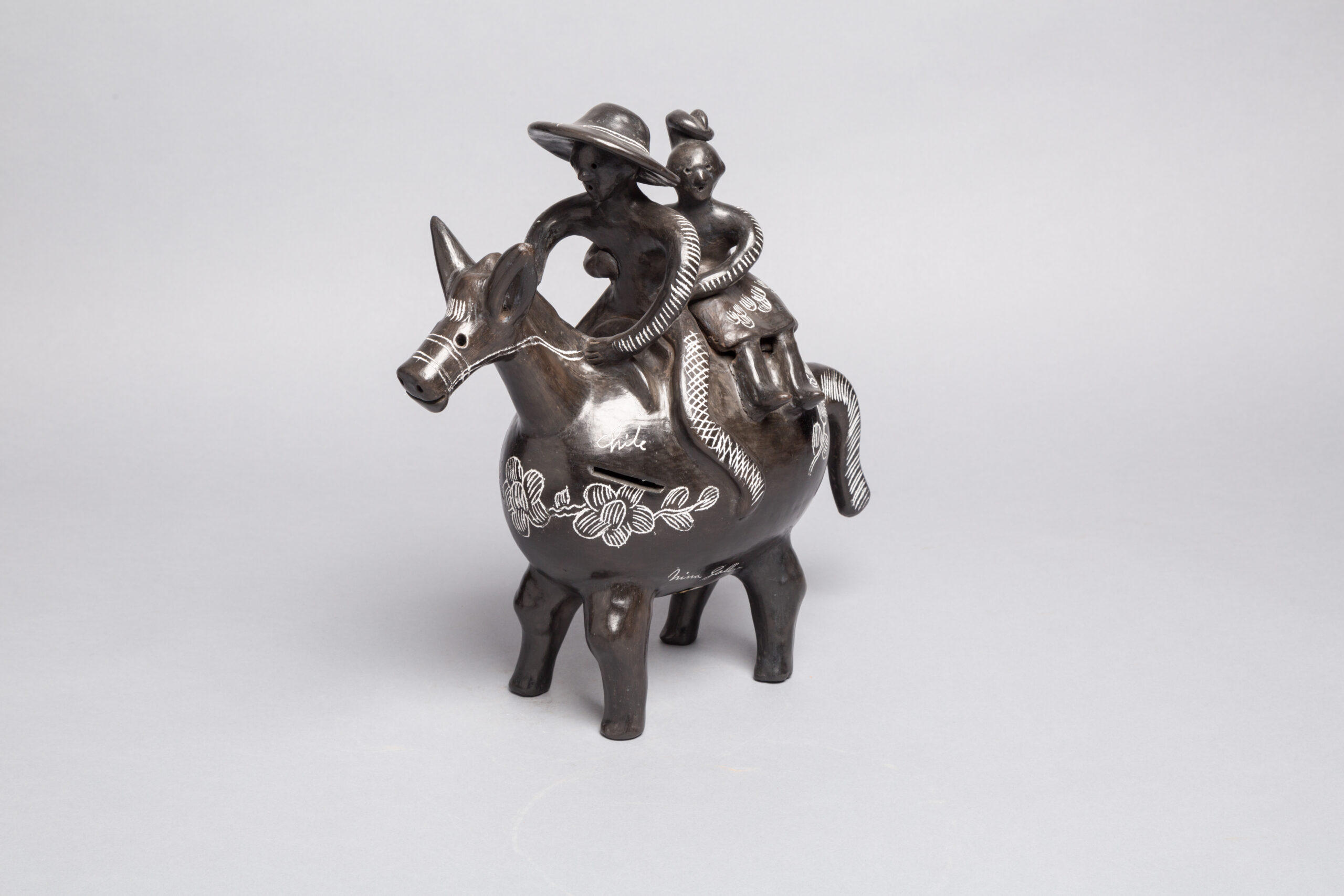Description
Quinchamalí es un poblado de la Comuna de Chillán, dentro la provincia del Diguillin., Región de Ñuble, Chile. Es reconocido históricamente por la elaboración de una alfarería de color negro, al igual que su localidad vecina, Santa Cruz de Cuca, ubicada al sur de ésta.
Las características de la alfarería de Quinchamalí es su color negro, obtenido por el ahumado realizado al final del proceso de cocción y su decoración de figuras blancas incisas sobre la superficie bruñida,
La técnica es el modelado manual con base en formas globulares, es decir, una esfera ahuecada, realizada a partir de dos medias esferas, que pegadas constituyen la base para el diseño de cualquier figura; se diferencian luego con los elementos que se agregan a esta esfera, formando el objeto final, como las patas, orejas, hocico y cola a la figura de un chancho.
La función de estas piezas es decorativa y utilitaria. Entre las más reconocidas están las figuras de la guitarrera, del chivo, el chancho,el pavo, entre otras. De las utilitarias: los platos, fuentes, azafates, jarras, ollas y pailas
La temática de los dibujos incisos son formas de figuras fitomorfas y geométricas. Las primeras muestran elementos naturales, como la espiga de trigo y guías de enredaderas, y flores. El motivo geométrico consiste en líneas paralelas onduladas y aserradas, que forman una textura igual a las líneas utilizadas como relleno dentro de las figuras fitomorfas.
Las materias primas utilizadas para la pasta son una arcilla ploma que sirve de base, se agrega un poco de arcilla amarilla de la zona y finalmente una materia desengrasante formada por arenilla de tierra
Actualmente no hay libre acceso al lugar de la extracción de la tierra, ya que está en terrenos privados lo que provoca una situación de vulnerabilidad en su continuidad.
English
Pottery of Quinchamali
Quinchamalí is a village in the municipality of Chillán, in the province of Diguillin, Ñuble Region, Chile. It is historically known for the production of black pottery, as is its neighbouring town, Santa Cruz de Cuca, located to the south of it. The characteristics of the pottery are its black colour, obtained by smoking at the end of the firing process, and its decoration of white figures incised on the burnished surface. The technique is manual modelling based on globular shapes, i.e. a hollowed out sphere, made from two half spheres, which when glued together form the basis for the design of any figure; they are then differentiated with elements that are added to this sphere, forming the final object, such as the legs, ears, snout and tail of the figure of a pig.
The function of these pieces is decorative and utilitarian. Among the best known are the figures of the woman playing the guitar, the goat, the pig, the turkey, among others. The utilitarian ones include plates, dishes, bowls, jugs, pots and pans. The theme of the incised drawings is phytomorphic and geometric shapes. The former show natural elements, such as the ear of wheat and vine guides, and flowers. The geometric motif consists of parallel wavy and serrated lines, which form a texture similar to the lines used as filler within the phytomorphic figures.
The raw materials used for the paste are lead clay as a base, a little local yellow clay, and finally a degreasing agent made of earthen grit. At present, there is no free access to the place where the earth is extracted, as it is on private land, which makes its continuity vulnerable.




Reviews
There are no reviews yet.